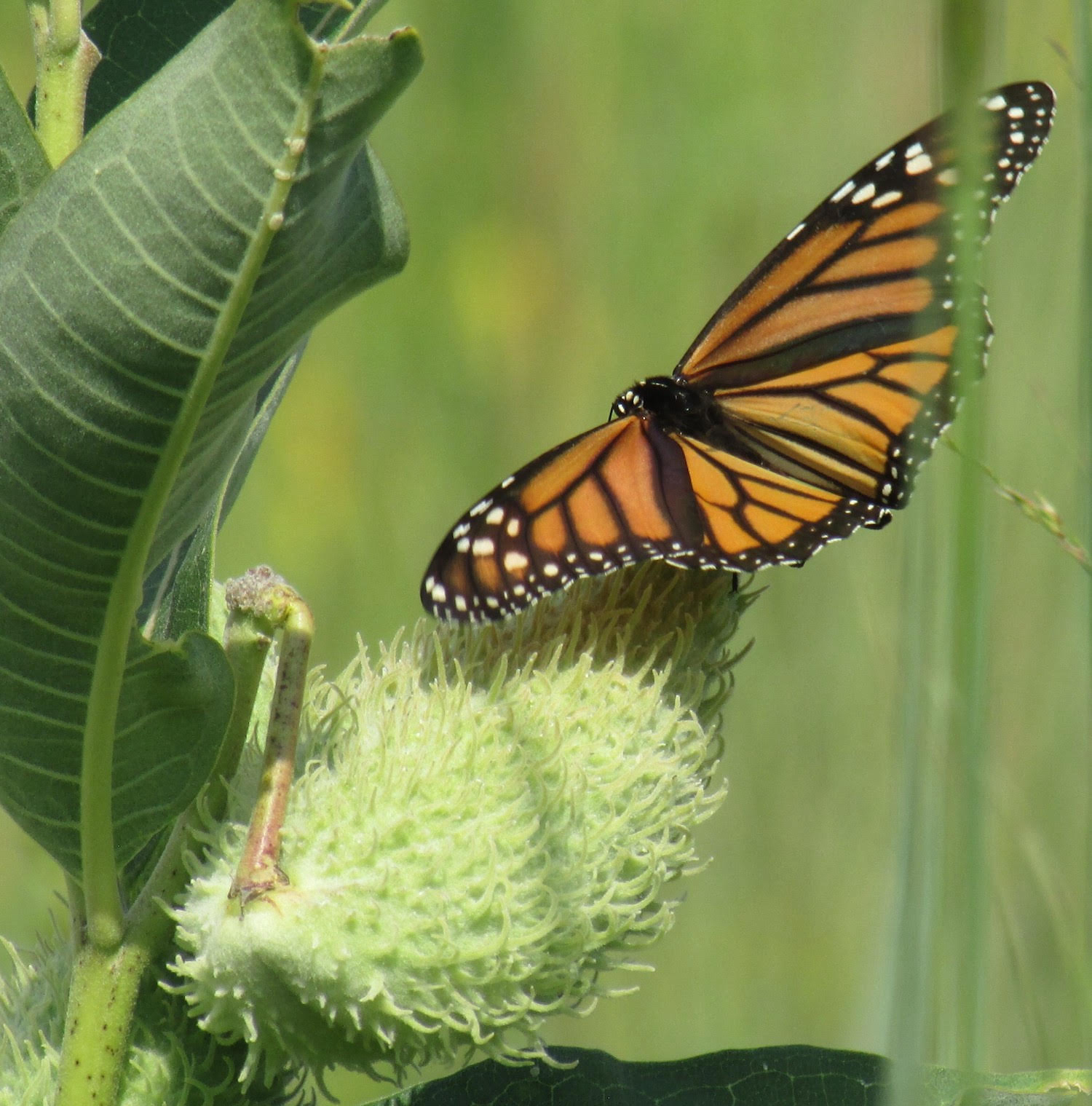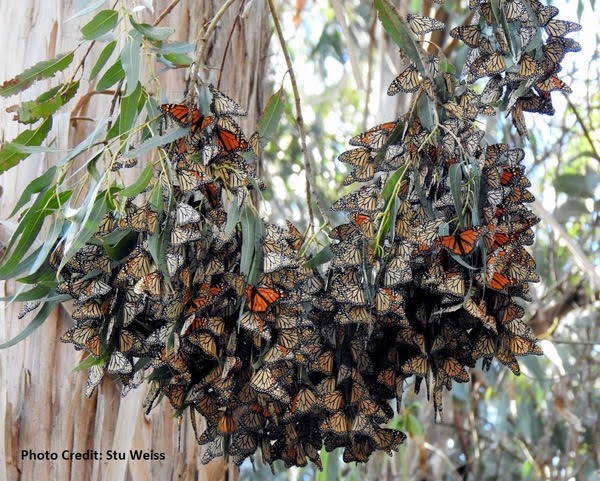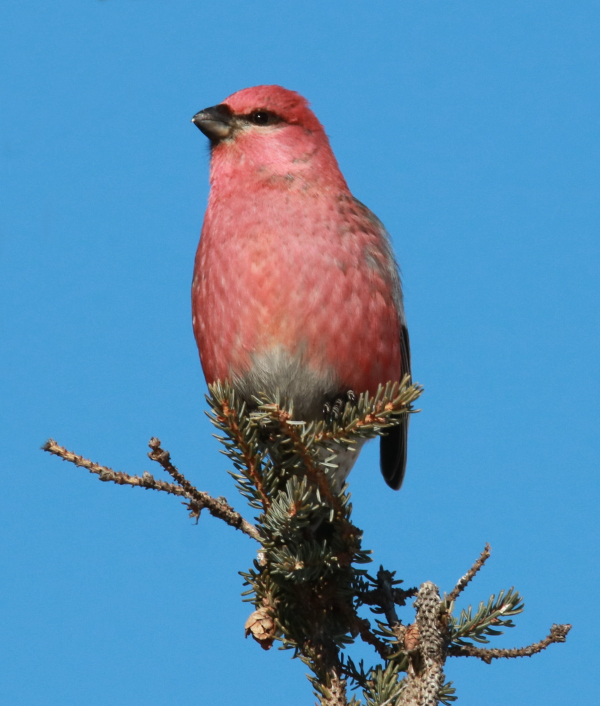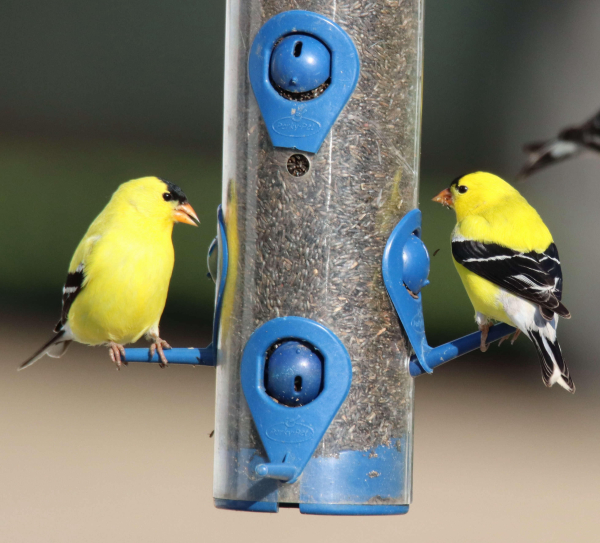Gather Milkweed Pods this Fall to Support Migrating Monarchs
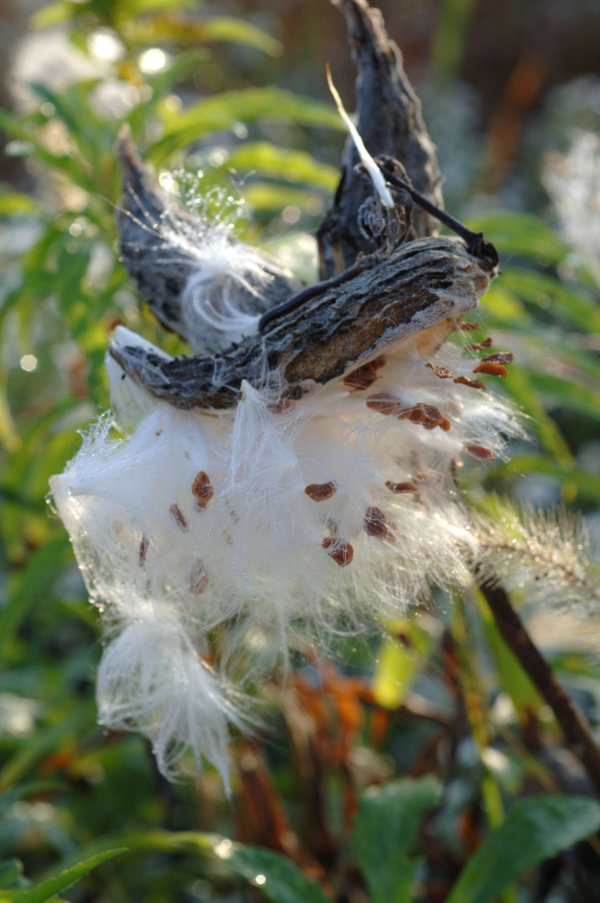

COLUMBUS, Ohio – As fall approaches, eastern monarch butterflies are migrating through Ohio on their way to overwintering sites in Mexico, and milkweed seed pods are ready to be picked, according to the Ohio Department of Natural Resources (ODNR) Division of Wildlife.
Monarchs travel between 50 and 100 miles per day on a journey that may cover several thousand miles in total. By gathering dried milkweed pods this fall and planting the seeds, you can support next year’s monarchs.
Various species of milkweed are the sole host plants for monarch caterpillars. Each spring, eastern monarchs lay eggs on milkweed as they migrate north from Mexico. After several generations, monarchs reach their northernmost range in southern Canada. By the fall, a super-generation migrates all the way to southern overwintering sites.
Migrating monarchs rely on adequate food resources along their journey. Native flowers provide monarchs with the fuel needed to reach overwintering areas. Look for monarchs in the coming weeks in forests, fields, gardens, and waterways as they migrate through Ohio. Migrants may travel individually or in groups.
Monarch butterflies are in decline across their range, as are many other pollinating insects, because of the loss of prairie and grassland habitat. One of the most important ways to help declining butterflies and other pollinating insects is by conserving tracts of unmown grasslands. The Division of Wildlife manages habitat on many of Ohio’s state wildlife areas to provide these grasslands that provide nectar-producing plants.
All Ohioans can play a role in supporting monarchs by planting milkweed.
Milkweed is the sole host plant for monarchs and is beneficial at every stage of the insect’s life cycle. Early fall is a great time to gather milkweed pods from the landscape and plant the seeds to add valuable habitat for monarchs. For those with an abundance of milkweed, the Ohio Pollinator Habitat Initiative (OPHI) is coordinating pod collection through local Soil and Water Conservation District locations. Go to ohiopollinator.org to find a nearby drop-off site.
Seventeen species of milkweed are found in Ohio, and 13 of those are essential host plants for monarch caterpillars, and all milkweed provides nectar for adult butterflies. Milkweed seeds form dense clusters in green seed pods. In late summer and early fall, these pods dry out and turn gray or brown. When this happens, or the pods begin to split, you can harvest milkweed seeds for planting. Separate the seeds from the attached silky fibers. The Monarch Joint Venture, an organization dedicated to conserving monarchs, provides guidelines for collecting and planting milkweed pods.
Pollinators play an integral role in the food web, and their work is essential in maintaining a healthy, adequate food supply in Ohio and beyond. Planting pollinator gardens is a gratifying way to help wildlife, and impacts are easily enjoyed by seeing butterflies and other pollinators move from plant to plant. Browse the free Backyards for Butterflies or Milkweeds and Monarchspublications for help choosing what to plant. Publications such as these are made possible in part by funds generated through donations as well as license and permit sales.
Support monarchs and other species of greatest conservation need with your purchase of an Ohio Wildlife Legacy Stamp. Fourteen dollars of every $15 Ohio Wildlife Legacy Stamp sold are invested in the state’s Wildlife Diversity Fund. This fund supports habitat restoration, wildlife and habitat research projects, creation of wildlife educational materials, and efforts that restore and conserve endangered and threatened species.
The mission of the Division of Wildlife is to conserve and improve fish and wildlife resources and their habitats for sustainable use and appreciation by all. Visit wildohio.gov to find out more.
ODNR ensures a balance between wise use and protection of our natural resources for the benefit of all. The visit the ODNR website at ohiodnr.gov.

